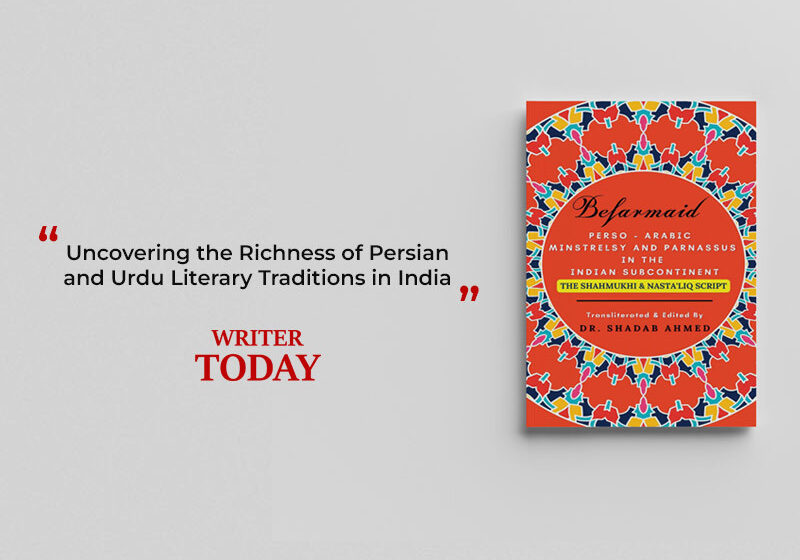Befarmaid: Uncovering the Richness of Persian and Urdu Literary Traditions in India

“Befarmaid: Perso – Arabic Minstrelsy and Parnassus in the Indian Subcontinent” by Dr. Shadab Ahmed offers an insightful exploration of the Persian and Urdu literary, social, cultural, political and historical traditions in India, particularly during the Delhi Sultanate and the Mughal eras. The book has a selection of works of 40 prominent writers who primarily wrote in Shahmukhi and Nasta’liq scripts, and who represent the kings, emperors, saints, outlaws and prisoners of the Mughal court and jurisdiction, as well as beau monde and aristocracy of the Delhi Sultanate and Mughal India.
The book highlights many details that have been judiciously recorded by the contemporary poets, writers and chroniclers of the era – be it the political conquests in India by the Central Asians, or the desire of a secular India by the 13 th to 15 th century and 17th to 19th century mystics, or the general anguish prevalent in Indian literary society through the 18 th century, or the development of the Deccani-style Sufi poetry and the Naqshbandi-Mujaddadi religious order, or the history of the Qadiri order or Owaisi order, or the Chishti Sama and the Sufi reforms aiming at the harmony of Sufi philosophy in Islam and Vedanta philosophy in Hinduism, or the Mughal-Afghan Wars and the rise of Afghan Nationalism, or the economic and political history of India with the advent of Western Imperialism. The author then traces the emergence of Urdu as a common tongue around the lower echelons of society in the Mughal Empire, which enabled communication between the various ethnicities in the region. The book sheds light on how Urdu eventually became a vibrant and dynamic language in its own right, contributing significantly to the literary traditions of India along with Persian and Sanskrit. Through these works, the reader gains a deep understanding of the Persian and Urdu literary traditions, including their themes, motifs, and styles. The book also explores the cultural and social context in which these works were produced, providing valuable insights into the historical and cultural landscape of the Indian subcontinent. The verses in the book are lucid and presented in a simple but astute manner.
In Conclusion, “Befarmaid: Perso – Arabic Minstrelsy and Parnassus in the Indian Subcontinent” is an impressive work that offers a unique and valuable perspective on the literary traditions of India. The book is well-researched and written in an engaging and accessible style, making it a must-read for anyone interested in the cultural and literary history of the Indian subcontinent.